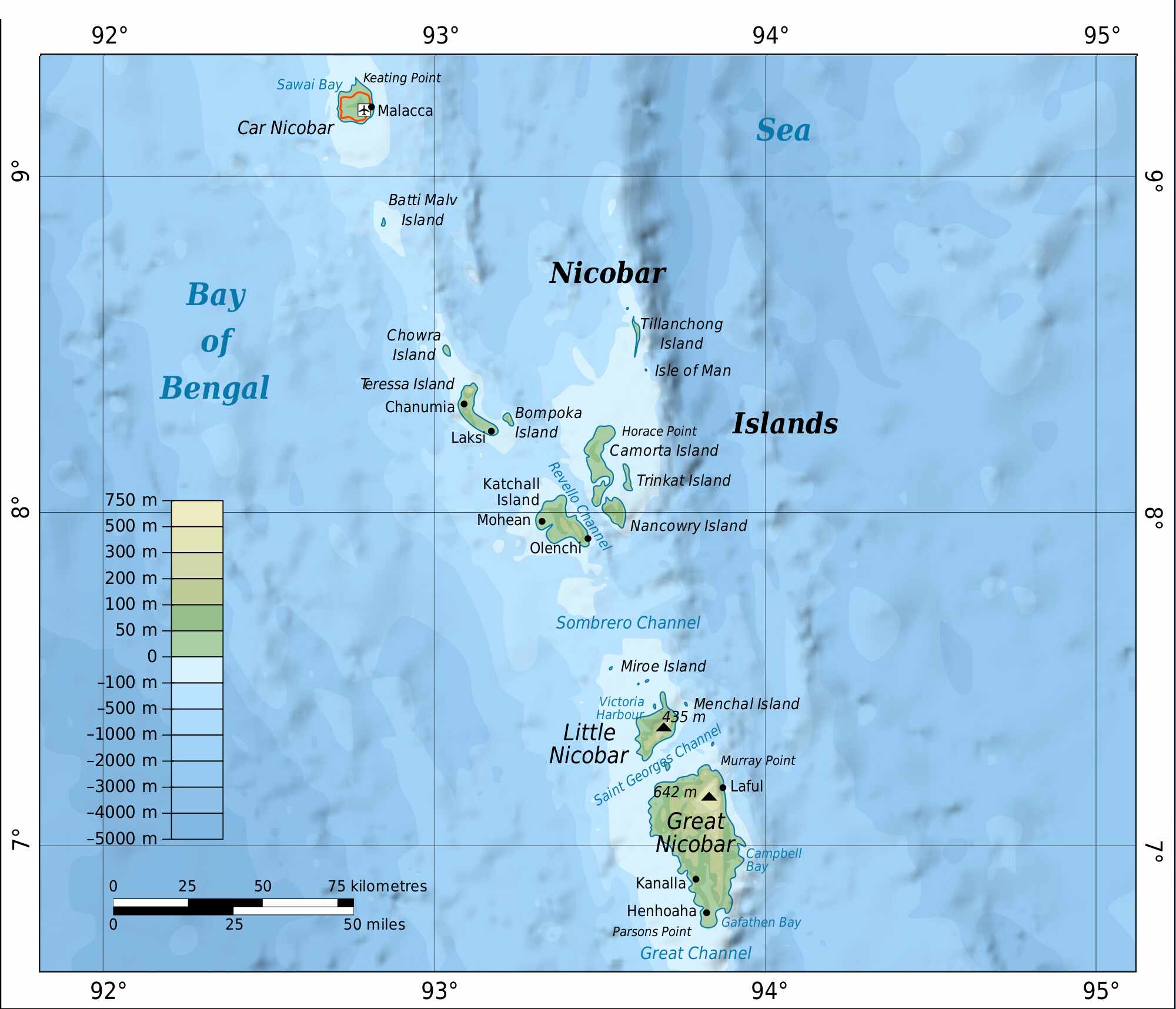Nancowry and the copra traders
After the Danish failed to settle in Nicobar, the islands eventually went to the British who would turn Nancowry into a trade hotspot — allowing copra to determine the settlement scenario

We will take a detour to the Nicobar group of islands which were of great interest to the mercantile nations due to their strategic location in the Bay of Bengal, and at the mouth of the Straits of Malacca. By the 18th century, the European powers were keen to look for safe havens on their sea-faring routes, and had already established settlements at St Helena and Mauritius. They were willing to look beyond. But before we talk about the interest shown in the islands by the Danes, the Norwegians, the Austrians, the Italians and of course the British, we may look at the connection of these islands to Sri Lanka and Thanjavur. The islands were first mentioned in the Sri Lankan Pali Buddhist chronicles — the 'Dipavamsa' (3rd or 4th century CE) and the 'Mahavamsa' (4th or 5th century) — as Naggadipa, or the island of children, perhaps because of their short stature and primitive nature of existence. The modern name is likely derived from the name given under Chola dynasty, Nakkavaram (meaning open/naked land or naked man's land, in Tamil) and is inscribed on the Thanjavur inscription of 1050 CE.
In the course of his extensive travels and diplomatic missions to India and Burma, Marco (12th-13th century) also recorded these islands as 'Necuverann'. Probably because of the references gathered from his journeys, the 15th-century Chinese Admiral Zheng He anchored on these islands and recorded them as Cui Lan island in the Mao Kun map of the Wu Bei Zhi.
The first of colonial powers to take interest in these islands were the Danes. It is recorded that in November 1754, an assembly of high-ranking Danish officials, including the Directors of Danish Asiatic Company and Governor Krog of Tranquebar colony, deliberated on the report of the Moravian Missionary Husfield who had spent considerable time on these islands. His report suggested that the Nicobar was an excellent place for cultivation of pepper, cinnamon, sugarcane, coffee and cotton, in addition to the existing natural crops of coconut and arecanut. The Danes also looked at the abundant timber resources that could be used for the ship-building industry.
However, all their attempts towards settling in the Nicobar Islands failed – most likely due to malarial climate and inadequate support from the government. That the Danes were not really invested in the islands was clear from the fact that between 1778 to 1783, the islands were taken over by the Austro-Hungarians, and later by the British from 1807 to 1814. Italy made an attempt at buying the Nicobar Islands from Denmark between 1864 and 1865. Denmark's presence in the islands ended formally on October 16, 1868 when it sold the rights of the Nicobar Islands to Britain which, in 1869, made it a part of British India.
The British began with a penal settlement at Nancowry which was developed as a settlement with the help of convict labour, following which the production of yam, pineapples, mangoes, vegetables was taken up. However, after 19 years, the penal settlement was closed down and all the convicts were shifted to the Andamans. The focus was now on Missionary activities, with the Anglicans taking the lead in establishing a school. By 1897, Rev Solomon had been appointed as the government agent and, in 1918, an Assistant Commissioner was stationed in Car Nicobar, along with a Tehsildar at Nancowry. Nancowry had emerged as an important trading post, for it was customary for vessels sailing to Rangoon (Yangon) from the Straits of Malacca to visit Nicobar for bartering rum and salt for coconuts. It was at Nancowry that the technique of copra making was developed, and it soon became a gamechanger for the Nicobars. It was more profitable to export dried copra as it saved transport cost. When copra godowns were set up, semi-permanent establishments followed, and traders started staying there for longer durations. The profile of the traders kept changing. In the initial years, the traders from Myanmar were dominant, followed by those from Sri Lanka, Maldives and Minicoy islands and Madras. However, the most successful firm was R Akoojee Jadwet & Company – which ran a flourishing trade between Gujarat and Myanmar. Their vessels regularly frequented the Nicobar Islands to obtain copra and betel nuts to be traded in Myanmar. In the early thirties, they obtained a long-term lease from the British government over the produce of Great and Little Coco Islands even as they maintained very cordial relations with Edward Kutchat, the Chief Captain of the Nicobars and the tribal leaders.
Views expressed are personal



